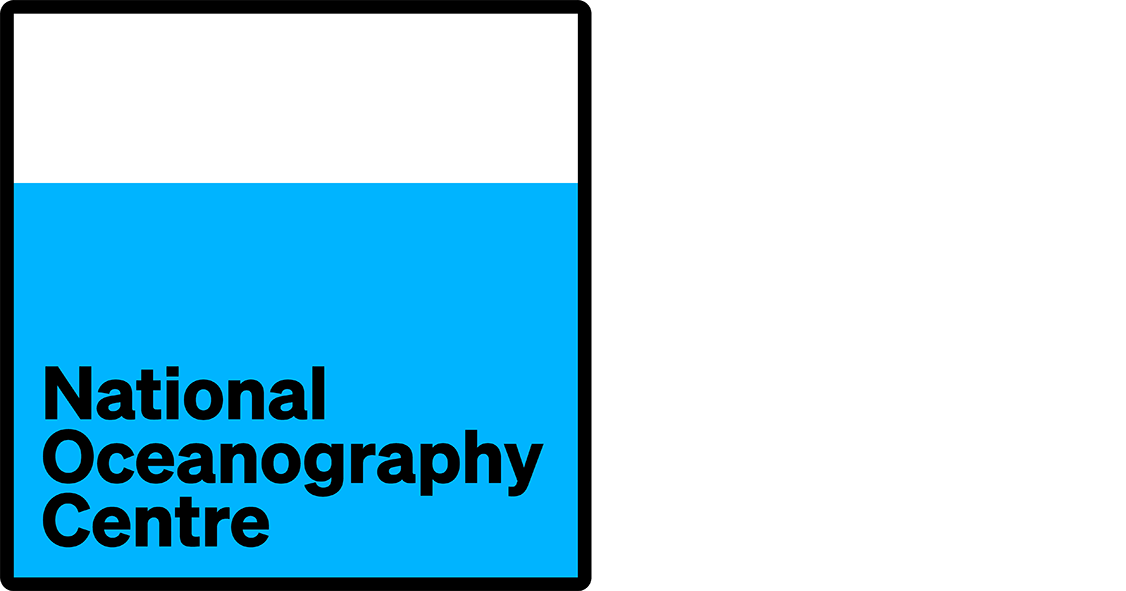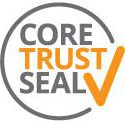Metadata Report for BODC Series Reference Number 760902
Metadata Summary
Problem Reports
Data Access Policy
Narrative Documents
Project Information
Data Activity or Cruise Information
Fixed Station Information
BODC Quality Flags
SeaDataNet Quality Flags
Metadata Summary
Data Description |
|||||||||||||||||||||||||||||||||||||||||
|
|||||||||||||||||||||||||||||||||||||||||
Data Identifiers |
|||||||||||||||||||||||||||||||||||||||||
|
|||||||||||||||||||||||||||||||||||||||||
Time Co-ordinates(UT) |
|||||||||||||||||||||||||||||||||||||||||
|
|||||||||||||||||||||||||||||||||||||||||
Spatial Co-ordinates | |||||||||||||||||||||||||||||||||||||||||
|
|||||||||||||||||||||||||||||||||||||||||
Parameters |
|||||||||||||||||||||||||||||||||||||||||
|
|||||||||||||||||||||||||||||||||||||||||
|
|||||||||||||||||||||||||||||||||||||||||
Problem Reports
No Problem Report Found in the Database
Data Access Policy
Open Data
These data have no specific confidentiality restrictions for users. However, users must acknowledge data sources as it is not ethical to publish data without proper attribution. Any publication or other output resulting from usage of the data should include an acknowledgment.
If the Information Provider does not provide a specific attribution statement, or if you are using Information from several Information Providers and multiple attributions are not practical in your product or application, you may consider using the following:
"Contains public sector information licensed under the Open Government Licence v1.0."
Narrative Documents
Instrument Description
CTD Unit and Auxiliary Sensors
Until January 2003, CTD casts were undertaken by a Chelsea Instruments Aquapack. A single titanium housing contained all sensors (temperature, conductivity, pressure and fluorescence) sensor processing boards, transmission and data logger plus the internal batteries. A LiCor PAR (photosynthetic active radiation) sensor (serial number: 6387) was attached. Pressure certification of the sensors limited profiles to a depth of 200m. All data were logged internally.
Since 2003, a SeaBird 19plus SEACAT profiler (SeaBird Electronics, Inc) has been employed at the RaTS station. A self powered (powered by 9 D-size alkaline batteries) and self contained unit containing temperature, conductivity and pressure sensors together with a WetLabs in-line fluorometer and the same PAR sensor as used previously (LiCor; serial number: 6387). Utilisation of this instrument enabled full depth profiles to be conducted. Data from all sensors are logged internally, with data collection being initiated by a seawater switch.
Sea-Bird SBE 19 and SBE 19plus SEACAT Profiler CTDs
The SBE 19 SEACAT Profiler is a self-contained, battery powered, pumped CTD system designed to measure conductivity, temperature, and pressure in marine or fresh water environments to depths of 10,500 meters. It was replaced by the SBE 19plus model in 2001. An updated version of this instrument is the SBE 19plus V2, which incorporates an electronics upgrade and additional features, with six differentially amplified A/D input channels, one RS-232 data input channel, and 64 MB FLASH memory.
The standard CTD unit comes with a plastic housing (rated to 600 m), although this can be replaced by titanium housing for depths up to 7000 m. It is typically used for CTD profiling although a conversion kit is available for mooring deployments. The CTD can also be attached to an SBE 36 CTD Deck Unit and Power/Data Interface Module (PDIM) for real-time operation on single-core armored cable up to 10,000 m.
Specifications
| Parameter | SBE 19 | SBE 19plus |
|---|---|---|
| Temperature | Range: -5 to +35 °C Accuracy: 0.01 °C Resolution: 0.001 °C Calibration: +1 to +32 °C* | Range: -5 to +35 °C Accuracy: 0.005 °C Resolution: 0.0001 °C Calibration: +1 to +32 °C* |
| Conductivity | Range: 0 to 7 S m-1 (0 to 70 mmho cm-1) Accuracy: 0.001 S m-1 Resolution: 0.0001 S m-1 Calibration: 0 to 7 S m-1. Physical calibration over the range 1.4 - 6 S m-1* | Range: 0 to 9 Sm-1 Accuracy: 0.0005 Resolution: 0.00005 (most oceanic waters, resolves 0.4 ppm in salinity); 0.00007 (high salinity waters, resolves 0.4 ppm in salinity); 0.00001 (fresh waters, resolves 0.1 ppm in salinity) Calibration: 0 to 9 S m-1. Physical calibration over the range 1.4 - 6 S m-1* |
| Strain gauge pressure sensor | Range: 0 to100, 150, 300, 500, 1000, 1500, 3000, 5000, 10000 or 15000 psia Accuracy: 0.25% of full scale range (100 - 1500 psia); 0.15% of full scale range (3000 - 15000 psia) Resolution: 0.015% of full scale Calibration: 0 to full scale in 20% steps | Range: 0 to 20, 100, 350, 1000, 2000, 3500 or 7000 m Accuracy: 0.1% of full scale range Resolution: 0.002% of full scale range Calibration: ambient pressure to full scale range in 5 steps |
*Measurements outside this range may be at slightly reduced accuracy due to extrapolation errors.
Options and accessories
Additional sensors can be attached to the CTD, including:
- high accuracy Paroscientific Digiquartz pressure sensor (depth range 0 to 20, 60, 130, 200, 270, 680, 1400, 2000, 4200, 7000 or 10500 m; accuracy 0.02% of full scale; resolution 0.0025% of full scale)
- Dissolved Oxygen (SBE 43 DO Sensor)
- pH* (SBE 18 pH Sensor or SBE 27 pH/ORP Sensor)
- fluorescence
- radiance (PAR)
- light transmission
- optical backscatter (turbidity)
The standard SBE 5M pump may be replaced by an SBE 5P (plastic housing) or 5T (titanium housing) pump for use with dissolved oxygen and/or other pumped sensors. Further details can be found in the manufacturer's SBE 19plus V2 instrument specification or theSBE 19 andSBE 19 plus user guides.
BODC Processing
The data arrived at BODC in Matlab binary .MAT files representing the CTD data collected as part of the Rothera Oceanographic and Biological Time Series (RaTS). These were reformatted to the internal QXF format using BODC transfer function 425. The following table shows how the variables within the matlab files were mapped to appropriate BODC parameter codes:
| Originator's Variable | Units | Description | BODC Parameter Code | Units | Comment |
|---|---|---|---|---|---|
| chlor | milligrams per metre cubed | Concentration of chlorophyll a per unit volume of the water body by in-situ fluorometer with laboratory calibration applied | CPHLPR01 | milligrams per metre cubed | Externally calibrated |
| depth | metres | Depth below the surface of the water column by profiling pressure sensor and converted to seawater depth using UNESCO algorithm | DEPHPR01 | metres | - |
| flsc | milligrams per metre cubed | Concentration of chlorophyll-a per unit volume of the water body by in-situ chlorophyll fluorometer and manuafacturer's calibration applied | CPHLPM01 | milligrams per metre cubed | - |
| par | micro Einsteins per metre squared per second | Downwelling 2-pi scaler irradiance as photons (PAR wavelength) in the water body | IRRDPP01 | micro Einsteins per metre squared per second | - |
| potemp | degrees Celsius | Potential temperature of the water column by computation using UNESCO 1982 algorithm | POTMCV01 | degrees Celsius | - |
| temp | degrees Celsius | Temperature of the water column by CTD or STD | TEMPST01 | degrees Celsius | - |
| salin | dimensionless | Practical salinity of the water column by CTD and computation using UNESCO 1983 algorithm and calibration against independent measurements | PSALCC01 | dimensionless | Externally calibrated |
| sigma0 | kilograms per metre cubed | Sigma-theta of the water column by CTD and computation from salinity and potential temperature using UNESCO algorithm | SIGTPR01 | kilograms per metre cubed | - |
The reformatted data were visualised using the in-house EDSERPLO software. Suspect data were marked by adding an appropriate quality control flag, missing data by both setting the data to an appropriate value and setting the quality control flag
External Data Processing
Various Matlab functions were utilised on the separate Aquapack and SeaBird CTD data files and further a function was used to combine the two data sets together. Briefly, functions ran on the Aquapack data involved calculating chlorophyll concentration from the raw fluorescence output, subsequent calibration of chlorophyll data (from a SeaBird 911 on board the RRS James Clark Ross, see Field Calibrations) and calculating the variable 'depth' from the pressure output. The SeaBird data received similar processing regarding the chlorophyll calculation and calibration. An additional function was then run to combine the separate Aquapack and SeaBird files together and to ensure that all the variable names were identical.
Field Calibrations
Precision of the CTD was maintained by performing concurrent casts with SeaBird 911plus CTDs during regular visits of the RRS James Clark Ross and RV Laurence M. Gould to Rothera. SeaBird salinity data were themselves calibrated using discrete samples measured on a GuildLine Autosal 8400B salinometer, standardised with IAPSO p-series standard seawater (seawater standard of precisely known electrical conductivity ratio). Offsets to the RaTS salinity data were applied to reconcile them with the calibrated SeaBird data. Densities were calculated using the UNESCO (1983) algorithm.
Sampling strategy
Sampling began at the Rothera Oceanographic and Biological Time Series (RaTS) site in January 1997 which was subsequently occupied every five days during the summer and every seven days in the winter, except when weather, ice or logistic constraints intervened. An upper ocean hydrographic cast and discrete water sample at a depth of 15m was conducted. CTD (conductivity, temperature and depth) casts were made off an inflatable boat by use of a hand-cranked winch during the summer months and through a hole in the ice during the southern hemisphere winter. Discrete water samples were taken from a 15m depth using a Niskin bottle closed with a brass messenger. Water samples collected were measured for macronutrients (nitrate, nitrite, phosphate, ammonia and silicate), chlorophyll (both whole and size fractionated), dissolved oxygen isotopes, dissolved organic carbon and microbial community analysis. Prior to March 2002 all macronutrients were transported back to the laboratory at Rothera in the dark and analysed there. Since then, all silicate, phosphate, nitrite and nitrate samples have been preserved and sent to Ocean Scientific International Ltd, Petersfield, Hampshire, UK for analysis. Ammonium remains to be analysed at Rothera. Samples collected for oxygen isotopic analysis were sent annually (4oC; dark) to the Natural Environment Research Council Isotope Geosciences Laboratory, Keyworth, UK.
There are two extended periods during which no data could be collected. August to December in both 2000 and 2001. In 2000, there was an unusually extended period of unfavourable ice conditions which were too heavy for boat operations and unsafe for sledge operations. Then in the period during 2001 a fire occurred which resulted in loss of use of the laboratory at Rothera. It was not possible to restart observations until replacement equipment arrived with the relief of the Rothera Research Station the following December.
Project Information
No Project Information held for the Series
Data Activity or Cruise Information
Cruise
| Cruise Name | RATS/CTD769 |
| Departure Date | 2005-09-21 |
| Arrival Date | 2005-09-21 |
| Principal Scientist(s) | Andrew Clarke (British Antarctic Survey) |
| Ship | Unknown self-propelled small boat |
Complete Cruise Metadata Report is available here
Fixed Station Information
No Fixed Station Information held for the Series
BODC Quality Control Flags
The following single character qualifying flags may be associated with one or more individual parameters with a data cycle:
| Flag | Description |
|---|---|
| Blank | Unqualified |
| < | Below detection limit |
| > | In excess of quoted value |
| A | Taxonomic flag for affinis (aff.) |
| B | Beginning of CTD Down/Up Cast |
| C | Taxonomic flag for confer (cf.) |
| D | Thermometric depth |
| E | End of CTD Down/Up Cast |
| G | Non-taxonomic biological characteristic uncertainty |
| H | Extrapolated value |
| I | Taxonomic flag for single species (sp.) |
| K | Improbable value - unknown quality control source |
| L | Improbable value - originator's quality control |
| M | Improbable value - BODC quality control |
| N | Null value |
| O | Improbable value - user quality control |
| P | Trace/calm |
| Q | Indeterminate |
| R | Replacement value |
| S | Estimated value |
| T | Interpolated value |
| U | Uncalibrated |
| W | Control value |
| X | Excessive difference |
SeaDataNet Quality Control Flags
The following single character qualifying flags may be associated with one or more individual parameters with a data cycle:
| Flag | Description |
|---|---|
| 0 | no quality control |
| 1 | good value |
| 2 | probably good value |
| 3 | probably bad value |
| 4 | bad value |
| 5 | changed value |
| 6 | value below detection |
| 7 | value in excess |
| 8 | interpolated value |
| 9 | missing value |
| A | value phenomenon uncertain |
| B | nominal value |
| Q | value below limit of quantification |


